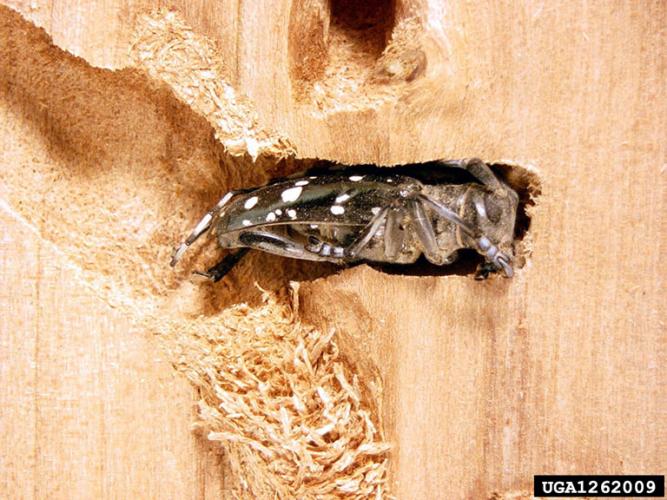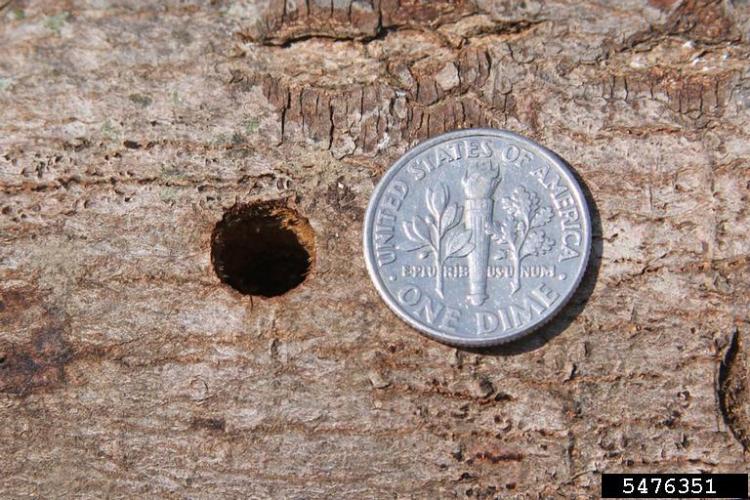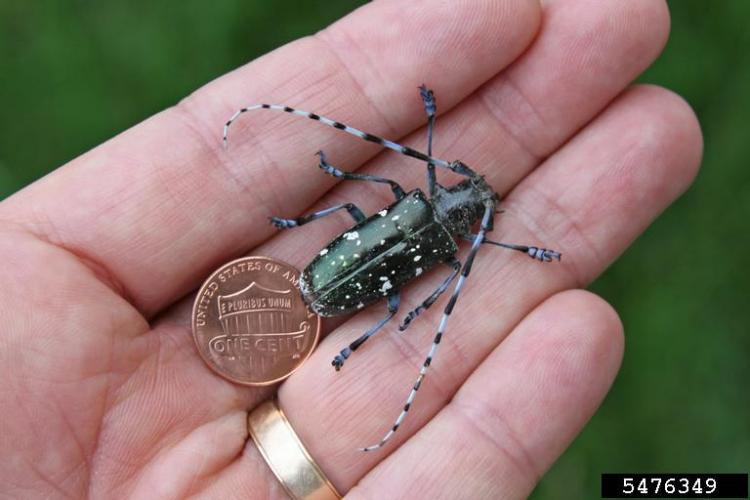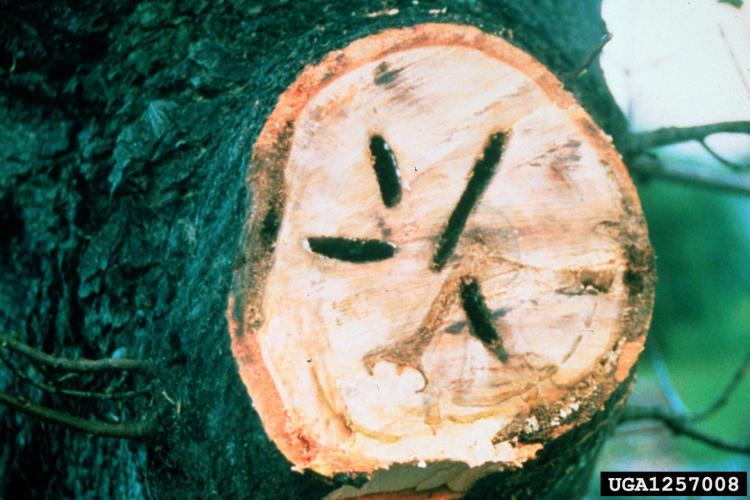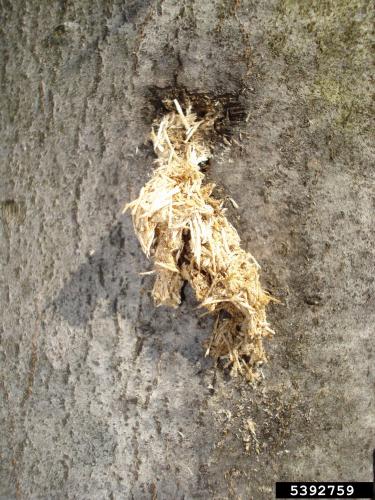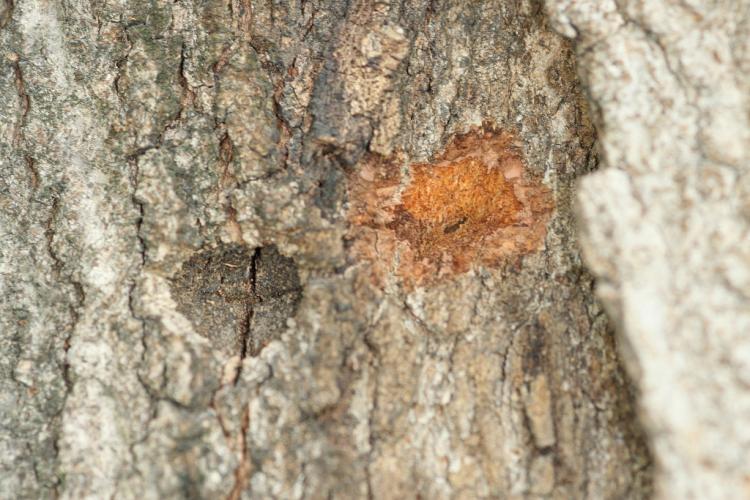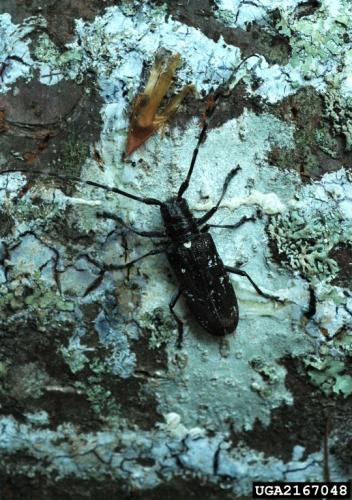Asian Longhorned Beetle
Identification
Asian longhorned beetle (ALB), also known as Starry sky beetle, is an insect, with six legs and are approximately 1 to 1.5 inches in length. Adults have a shiny jet black body with distinctive white spots. They have long antennae (longer than their body) banded in black and white. They may have blueish feet.
ALB larvae can be up to 2.5 inches long. They are creamy white with no legs and have a hard brown plate on their head.
Signs and Symptoms
- Adult beetles emerge July - September
- Perfectly round, dime-sized exit holes - test with a pencil to see that they go deeper into the tree than a tap hole
- Egg laying sites may ooze sap or be healed over and knot-like
- Sawdust or frass in branch crotches and at the tree base
- Dead or fallen branches
See image slideshow above for signs and symptoms.
Biology
origin
Native to East Asia. The first North American discovery of Asian longhorned beetle was in New York City in 1996. A large infestation was found in Worcester, MA, 45 miles from Vermont, in 2008.
habitat
ALB larvae tunnel deep into the trunk and branches of many hardwood species. When adults emerge, they feed on the leaves. ALB host species include: ash, birch, elm, golden raintree, sycamore, maple, horse chestnut, katsura, mimosa, mountain ash, poplar, and willow.
Lifecycle
There is one generation of ALB each year. Like other beetles, the ALB goes through 4 stages in its lifecycle.
Adult females chew out an egg niche in the bark of a living tree. She lays a single, tiny egg, about 0.5mm long, oval and white in color, on the inner bark.
Eggs hatch in 1 to 2 weeks.
Young larvae feed just below the bark for about 20 days in the cambium layer. Older larvae bore into the sapwood and heartwood of the trunk and branches, creating tunnels up to ½ inch in diameter, thereby structurally compromising the tree. Branches with tunnels are weakened and may break during windy weather, potentially causing property damage or personal injury.
Larvae overwinter in tunnels and resume feeding in spring. Mature larvae can reach a length of 2 inches.
Pupation occurs in late spring or early summer and adults may emerge from early to mid-summer.
Adults chew a perfectly round emergence hole, about the size of a dime, and exit the tree. Adult beetles feed on the bark and leaves, but this feeding causes little damage to the tree.
Each adult female can lay up to 90 eggs in their lifetime.
Learn about the biology of Asian Longhorned Beetle at the USDA APHIS Asian Longhorned Beetle site
Ecological threat
The Asian longhorned beetle threatens our hardwood trees. It threatens recreation and forest resources (like maple syrup!) valued at billions of dollars. The ALB has the potential to cause more damage than Dutch elm disease, chestnut blight and spongy moths combined.
Vermont Distribution
The Asian longhorned beetle has never been detected in Vermont.
Citations
Photo Credit
Joe Boggs, Ohio State University, Bugwood.org
Kenneth R. Law, USDA APHIS PPQ, Bugwood.org
Michael Bohne, Bugwood.org
R. Anson Eaglin, USDA, Bugwood.org
William M. Ciesla, Forest Health Management International, Bugwood.org
information credit
Canadian Food Inspection Agency ALB Page
Detecting the Signs and Symptoms of Asian Longhorned Beetle Injury
New York Invasive Species Information
